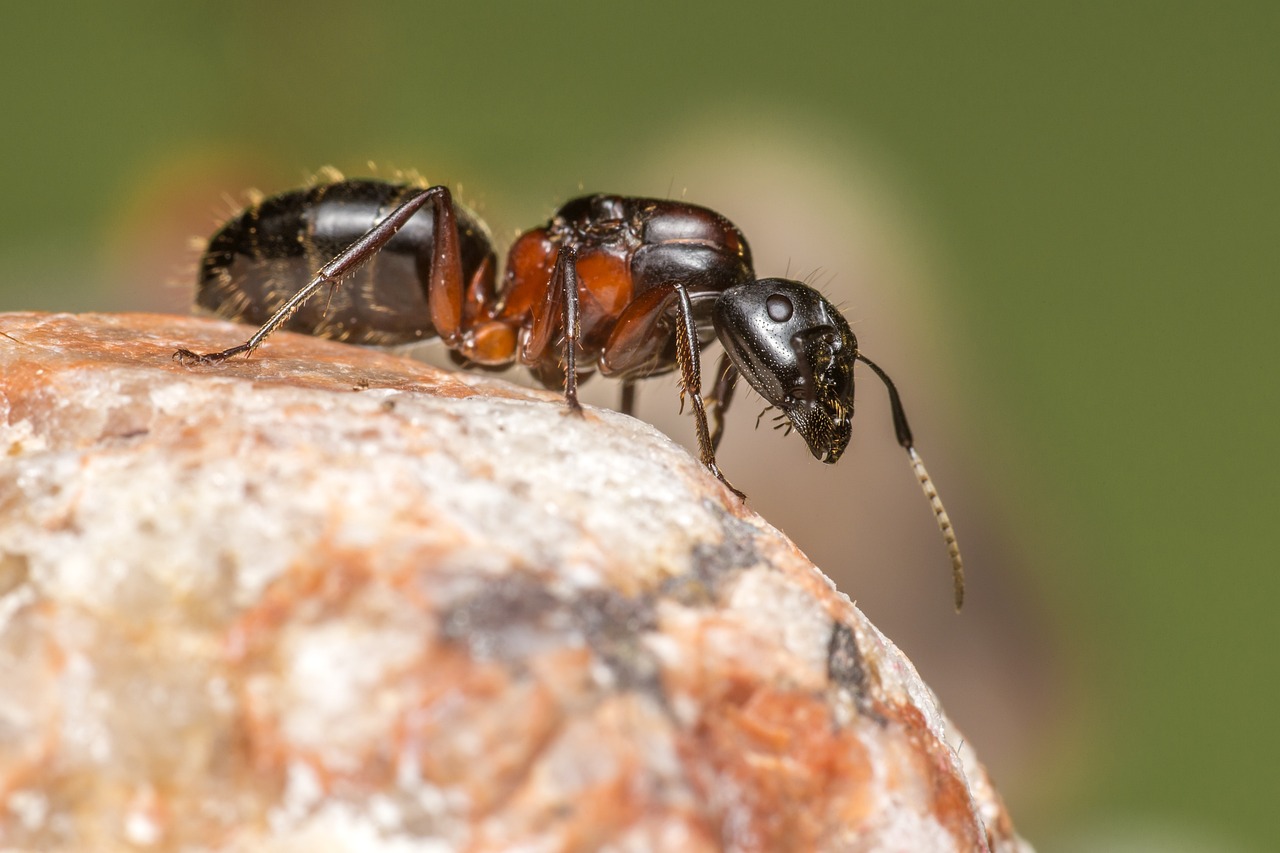Ants are social insects belonging to the family Formicidae and the order Hymenoptera. Here’s a brief overview:
- Appearance: Ants vary in size, color, and appearance depending on the species. However, they typically have three main body segments: the head, thorax, and abdomen. Ants have six legs and antennae. Some species have wings, especially during the mating season.
- Habitat: Ants are found on every continent except Antarctica. They inhabit a wide range of habitats, including forests, grasslands, deserts, and urban areas. Ant colonies can be found underground, in soil, under rocks, in rotting wood, or even in human-made structures.
- Social Structure: Ants are eusocial insects, meaning they live in highly organized colonies with division of labor and cooperative care of the young. A typical ant colony consists of a queen (or multiple queens), workers, and sometimes soldiers. The queen’s primary role is reproduction, while workers perform tasks such as foraging, caring for the young, and defending the colony.
- Feeding Habits: Ants are omnivorous, feeding on a wide variety of food sources including insects, honeydew produced by aphids, nectar, seeds, and other organic matter. Some ant species are specialized predators, while others are scavengers or herbivores.
- Communication: Ants communicate with each other using a variety of methods, including chemical signals (pheromones), tactile cues, and auditory signals. Pheromones play a crucial role in coordinating activities such as foraging, nest defense, and recruitment to food sources.
- Ecological Importance: Ants play important roles in ecosystems as scavengers, predators, seed dispersers, and soil engineers. They contribute to nutrient cycling, seed dispersal, and pest control. Some ant species are considered keystone species, meaning they have a disproportionate impact on their ecosystem relative to their abundance.
- Interactions with Humans: While ants can be beneficial in ecosystems, some species are considered pests when they invade homes, gardens, or agricultural fields. Control methods for pest ants may include baiting, trapping, and insecticide application.
Overall, ants are fascinating insects with complex social behaviors and important ecological roles in terrestrial ecosystems. They are among the most successful and abundant organisms on Earth, with an estimated 10,000 species described worldwide.
Visited 1,000 times, 11 visit(s) today
Views: 1360
Subscribe to the newsletter:
